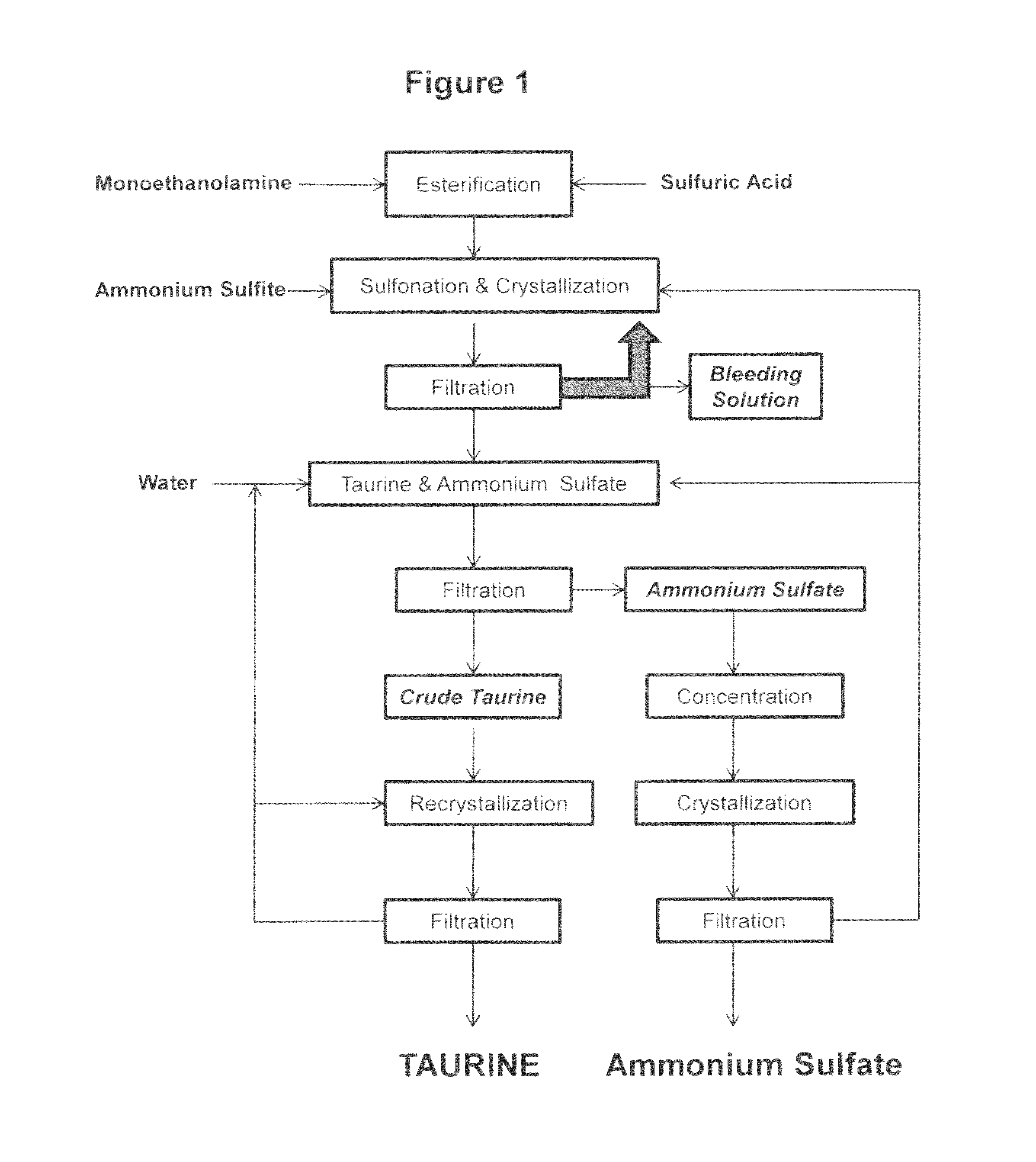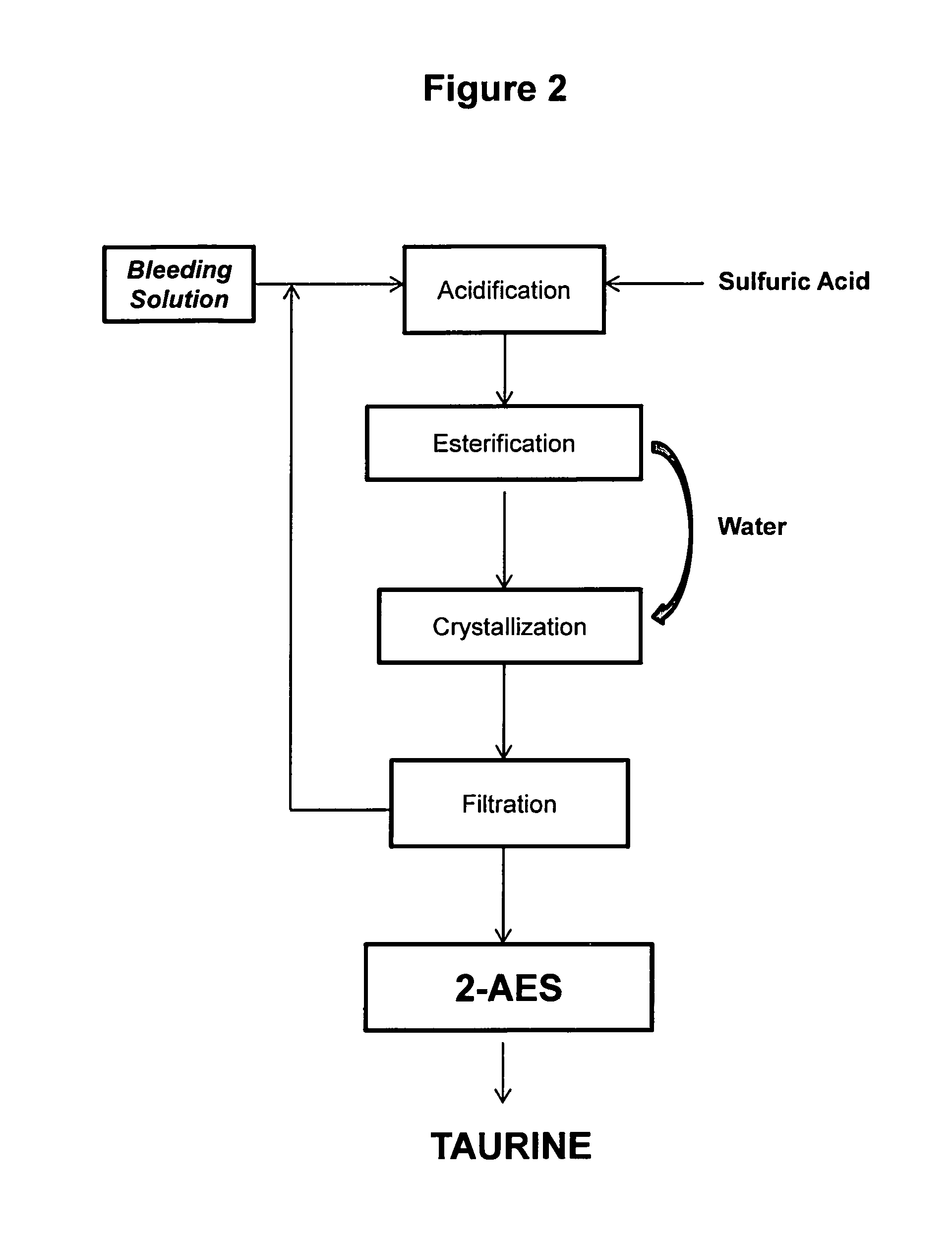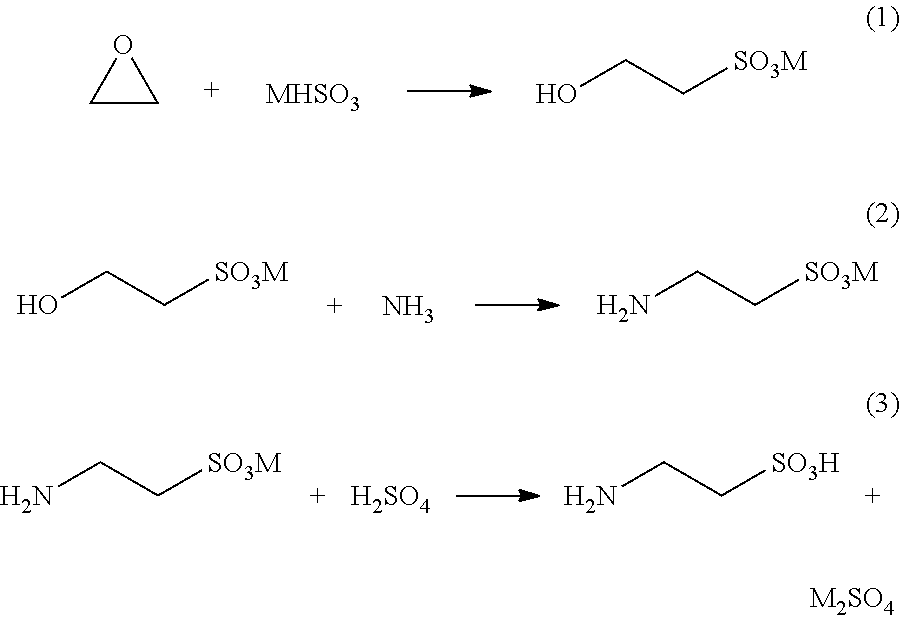Cyclic process for the production of taurine from monoethanolamine
a monoethanolamine and cyclic process technology, applied in the preparation of sulfuric acid esters, organic chemistry, chemistry apparatus and processes, etc., can solve the problems of high toxicity and carcinogenicity, process involves serious hazards, and product quality is not good,
- Summary
- Abstract
- Description
- Claims
- Application Information
AI Technical Summary
Benefits of technology
Problems solved by technology
Method used
Image
Examples
example 1
[0048]Into a one-liter autoclave equipped with a stirrer were charged 251 g of ammonium sulfite monohydrate and 300 mL of water. After the pH of the solution was adjusted to 7.2 with 6 N sulfuric acid, 106.7 g of AES was added. After the reaction was carried out at 110° C. under autogenous pressure for 24 hours, the pH was found to be 5.9.
[0049]HPLC analysis showed that the solution contains 67.5 g of taurine (72% theoretical yield), 3.2 g of unchanged AES (3%), and 11.4 g of MEA.
example 2
[0050]Into a one-liter autoclave equipped with a stirrer were charged 251 g of ammonium sulfite monohydrate, 40 g of ammonium sulfate, 15.3 g of MEA, and 300 mL of water. After the pH of the solution was adjusted to 7.2 with 6 N sulfuric acid, 106.7 g of AES was added. After the reaction was carried out at 110° C. under autogenous pressure for 24 hours, the pH was found to be 6.2.
[0051]HPLC analysis showed that the solution contains 79 g of taurine (85% theoretical yield), 1.4 g of unchanged AES (1.3%), and 22.2 g of MEA.
example 3
[0052]The reaction was carried the same as in Example 2, except diethanolamine was used in place of MEA.
[0053]HPLC analysis showed the reaction mixture contains 78 g of taurine (83% yield), 2.5 g of unchanged AES (5.5%), and 5.3 g (11.6%) of MEA.
PUM
| Property | Measurement | Unit |
|---|---|---|
| pH | aaaaa | aaaaa |
| temperature | aaaaa | aaaaa |
| temperature | aaaaa | aaaaa |
Abstract
Description
Claims
Application Information
 Login to View More
Login to View More - R&D
- Intellectual Property
- Life Sciences
- Materials
- Tech Scout
- Unparalleled Data Quality
- Higher Quality Content
- 60% Fewer Hallucinations
Browse by: Latest US Patents, China's latest patents, Technical Efficacy Thesaurus, Application Domain, Technology Topic, Popular Technical Reports.
© 2025 PatSnap. All rights reserved.Legal|Privacy policy|Modern Slavery Act Transparency Statement|Sitemap|About US| Contact US: help@patsnap.com



